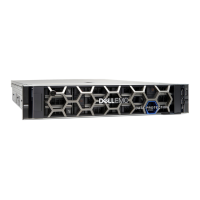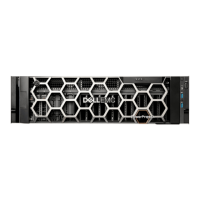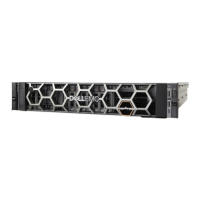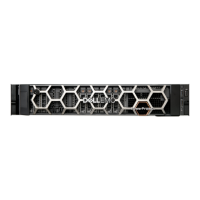Table 8 Server information (continued)
Item Value
l
ESXi node 2: 192.168.100.81 /
255.255.255.224/27
l
ESXI node 3: 192.168.100.82 /
255.255.255.224/27
Subnet mask 255.255.255.224
VLAN 122
Enabled Services Virtual SAN traffic
Network label assigned DP-appliance-vsan
VMK2 IP address Customer defined
Subnet mask
IP default gateway
DNS server(s)
VLAN 123
123 is the default value, but the
customer may have changed it. Verify
the VLAN ID with the customer.
Enabled services Management traffic
Network label assigned DP-appliance-external
vSwitch0 adapters assigned vSwitch0: vmnic0, vmnic4
vSwitch1 adapters assigned vSwitch1: vmnic2, vmnic6
Identify the failed server
Before beginning the procedure, compare the PSNT information on the Service
Request to the PSNT information on each server to identify the failed server. The
PSNT tag on each server is located in the lower right side of the enclosure, under disk
drive slot number 1.
Locate and connect to the Dell switch
Replacing a component of the Dell PowerEdge server requires that you connect to the
Dell switch to access the VMware vSphere Web Client, and the Dell server iDRAC
interface. Connect to port 38 on the Dell switch. The switch port layout is displayed in
Hardware replacement overview.
Procedure
1. Consult with the customer to get the values for IP address, subnet, and
gateway for IDRAC.
Dell PowerEdge R630 Server FRUs
DELL EMC CONFIDENTIAL
Identify the failed server 47

